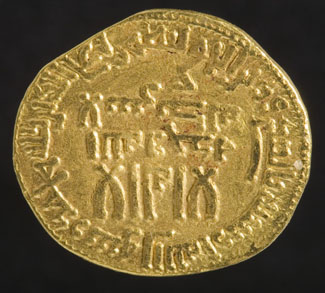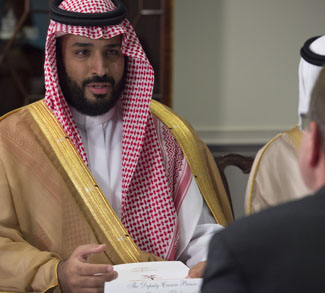In a 2016 interview with Bloomberg, Saudi Crown Prince Mohammad bin Salman described a vision for the Kingdom’s post-carbon future, one that would channel the oil wealth into a vast and diversified portfolio of global equities and assets. Such a move would, in the words of the Prince, “technically make investments the source of Saudi government revenue,” therefore weaning the country off its oil dependence in an era of erratic oil prices and fickle OPEC+ politics.
Nearly five years later, and the emergence of similar state-led restructuring plans, often branded as “Visions,” have taken place across all 6 of the Gulf Cooperation Council’s (GCC) member-states. Through the establishment and growth of sovereign wealth funds, the trajectory of the GCC economies will increasingly rely upon 3 missions: 1) the performance of international investments; 2) regional expansion of non-oil conglomerates; and 3) the successful execution of ambitious infrastructure and stimulus projects designed to bolster non-oil sectors.
With over $3 trillion USD in assets under management (AUM) between them, the GCC’s 10 largest sovereign wealth funds remain formidable players in global markets and occupy 35% of the spots in the top 20 rankings of such funds. Such largesse was witnessed in the post-pandemic buying spree, where GCC sovereign wealth funds snapped up stakes in hard-hit industries like tourism and transportation, two sectors that the GCC countries look to as possible sources of economic diversification. This risk appetite was even bullish enough to warrant a $40 billion USD infusion into the Saudi Public Investment Fund (PIF) using the central bank’s foreign reserves. Just five months after the infusion, the Saudi Crown Prince announced that the PIF would inject double that amount into the domestic economy in 2021 and 2022.
Yet, amid low or even negative interest rates among advanced economies, coupled with steep valuations in many equity markets, the competition for yield among institutional investors has compelled many of them to take on riskier emerging market debt, and/or channel investment in expensive and illiquid alternatives like private equity placements and foreign property markets.
As perhaps the most poignant example, both the Saudi PIF, and Abu Dhabi’s Mubadala Investment Company collectively committed $60 billion USD to the Softbank Vision Fund, a much-vaunted venture capital fund concentrated on emerging technology firms. In spite of its hype, the fund suffered severe losses when some of its most reputable portfolio companies, like the coworking start-up WeWork, underwent sharp devaluations. Without a noteworthy domestic technology or life sciences sector to speak of, GCC states have few options beyond repatriating their investment capital in hopes that they can nurture their own “national champions” in the region.
One area in which the GCC economies have managed to sustain non-oil growth has been in the regional expansion and promotion of Gulf-based conglomerates. Though such firms are privately held, they typically maintain a connection to the state apparatus due to the composition of shareholders, including sovereign wealth funds. By engineering mergers and expanding through downstream investments across the MENA region, Gulf conglomerates, buttressed by the capital of sovereign wealth funds, are increasingly expanding their footprint through outward foreign direct investment in neighboring non-GCC states in sectors like construction, retail, agriculture, and telecommunications.
Although sovereign wealth funds typically search for and execute investments abroad, the concomitant shocks of the COVID-19 pandemic and vagaries in the energy market have forced some GCC member-states to rethink and reorient the mandate of these funds. With oil prices still anchoring government budgets, fiscal deficits among the GCC states are likely to become exacerbated in the absence of fiscal reform or more stable and diversified sources of public revenues.
Thus, the responsibilities charged to sovereign wealth funds are increasingly aligned with domestic policy priorities, particularly with the development of the private sector, and its ability to absorb labor from the bloated and expensive civil service positions that most GCC citizens hold and covet. The mismatch in compensation between the public and private sectors remains vast and untenable. In remedying this issue, policymakers have resorted to their standard playbook during downturns in oil markets, by drumming up private sector activity through state-sponsored infrastructure projects.
Trade-related infrastructure, “smart cities,” and tourist attractions each play recurring roles in the stratagem laid out by Gulf policymakers, which include a preponderance of decade(s)-long development plans. Saudi Arabia (Vision 2030), Qatar (Vision 2030), Bahrain (Vision 2030), Abu Dhabi (Vision 2030), Dubai (Industrial Strategy 2030), Kuwait (Vision 2035), and Oman (Vision 2040) each hint at the pressing need for economic reinvention, but the objectives in each plan remain lofty and ambiguous, with critics dismissing such initiatives as white elephant projects at scale.
Other policy signals, such as deportations of migrants and planned reforms of the notorious kafala system, which for decades enabled the import of cheap, low-skilled labor to satisfy manpower demands in sectors like construction and retail, suggest that most of the GCC states are planning a significant ascent in global value chains. Some of the most oft-cited sectors in GCC “Vision” documents include tourism, healthcare, media/entertainment, information technology, and transportation.
To realize such ambitions, the GCC states will still have to rely on foreign labor, albeit one that is high-skilled with the requisite technical expertise, in tandem with upskilling its own nationals. The region continues to be a significant source of international students for higher education institutions in the United States and Europe, but its own educational institutions have seen an influx in funding and could benefit from domestic injections by their sovereign wealth fund. Overcoming cultural biases against certain types of work, boosting female labor participation, and failed attempts to impose quotas of nationals employed by private firms, are each latent in the region’s struggle to retain its social conservatism and modern economic agenda.
Having succeeded in containing the human costs of the COVID-19 pandemic, the GCC states find themselves at a critical juncture that will determine the viability of their post-oil futures. The deferral of taxes for businesses and the drop in oil exports continue to strain already stretched public finances. Though politically contentious, austerity measures introduced during the pandemic point toward a more sustainable future for the GCC economies. With oil-based financial surpluses set to shrink in perpetuity, averting the long-dreaded “resource curse” will require a substantial push out of the Gulf’s comfort zone in its social, political, and economic domains.
*This article was originally published on January 18, 2021.

![Deputy Crown Prince, Second Deputy Prime Minister and Minister of Defense of the Kingdom of Saudi Arabia, Mohammad Bin Salman bin Abdulaziz Al-Saud participates in the Counter-ISIL Ministerial Joint Ministerial Plenary Session, at the U.S. Department of State in Washington, D.C. on July 21, 2016. [State Department Photo/Public Domain], https://commons.wikimedia.org/wiki/File:Deputy_Crown_Prince_Mohammad_Bin_Salman_bin_Abdulaziz_Al-Saud_Participates_in_the_Counter-ISIL_Ministerial_Plenary_Session_-_Flickr_-_U.S._Department_of_State_(cropped).jpg Deputy Crown Prince, Second Deputy Prime Minister and Minister of Defense of the Kingdom of Saudi Arabia, Mohammad Bin Salman bin Abdulaziz Al-Saud participates in the Counter-ISIL Ministerial Joint Ministerial Plenary Session, at the U.S. Department of State in Washington, D.C. on July 21, 2016. [State Department Photo/Public Domain], https://commons.wikimedia.org/wiki/File:Deputy_Crown_Prince_Mohammad_Bin_Salman_bin_Abdulaziz_Al-Saud_Participates_in_the_Counter-ISIL_Ministerial_Plenary_Session_-_Flickr_-_U.S._Department_of_State_(cropped).jpg](https://www.geopoliticalmonitor.com/wp-content/uploads/2021/01/Deputy_Crown_Prince_Mohammad_Bin_Salman_bin_Abdulaziz_Al-Saud_Participates_in_the_Counter-ISIL_Ministerial_Plenary_Session_-_Flickr_-_U.S._Department_of_State_cropped.jpg)


